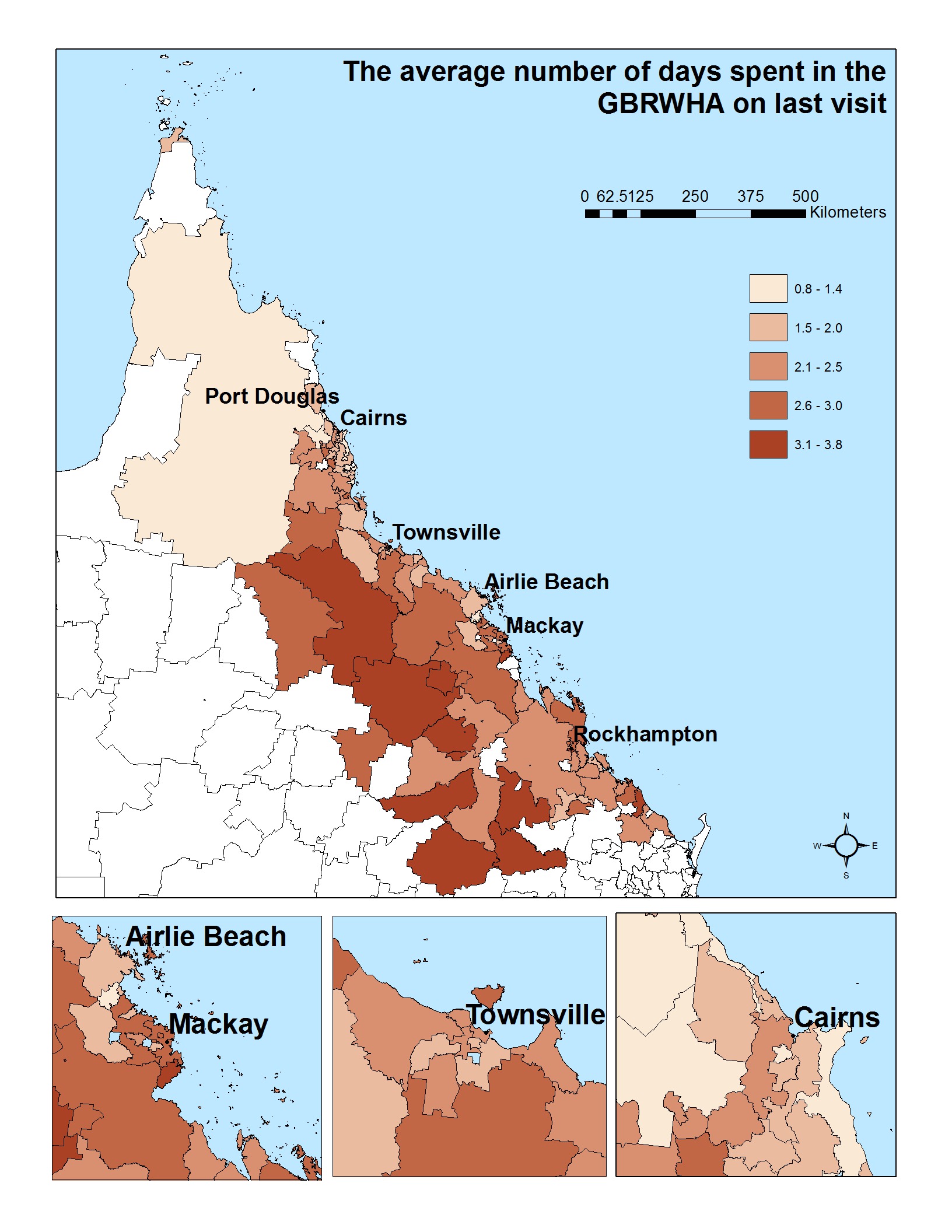JCU School of Business and The Cairns Institute
Type of resources
Topics
Keywords
Contact for the resource
Provided by
Representation types
status
-

This data set in excel sheet format presents results of the mail survey of 1565 residents of the GBRWHA. The dataset is accompanied by a set of 58 maps that illustrate key findings. Project 10.2 explored how visitors and residents feel towards and perceive Great Barrier Reef World Heritage Area, as well as their willingness to pay to protect the reef and their satisfaction with current and future developments in and around the GBRWHA. Data were collected from the residents of the GBRWHA using a mail-out survey to a geographically stratified random sample of resident households in postcodes that lay partially or entirely within the study area. The pilot stage included 230 randomly selected households (2 from each of the postcodes identified), while the main mailing included about 40 households in each postcode. Following the Dilman (2007) methodology, we sent a reminder letter with replacement questionnaire to those who had not responded four weeks later, with a third reminder after that. We estimate that just under 4,000 questionnaires reached their intended recipients, and we received 902 completed questionnaires. We were cognizant that some demographic groups are more likely to respond to mail-out surveys than others in these regions (e.g. young males, Indigenous people). Therefore we conducted supplementary face-to-face data-collection using the same questionnaire, across various public locations such as ferry terminals, airports and beaches. These extra activities generated an additional 663 responses, bringing the total number of completed resident questionnaires to 1565. Data Format: Excel data sheet with each row representing a postcode within the Great Barrier Reef Catchment Area and each column providing summary information about one variable (e.g. % or respondents who have never been to the GBRWHA). The GIS maps represent the data visually (one variable per map, showing responses for each postcode). The original raw data cannot be published for privacy reasons. Data available here is a public form of the data, aggregated by postcode. Further details of the project, including data collection and analysis methods, can be found in: Stoeckl, N., Farr, M. and Sakata H. (2013) What do residents and tourists ‘value’ most in the GBRWHA? Project 10.2 interim report on residential and tourist data collection activities including descriptive data summaries. Report to the National Environmental research program. Reef and Rainforest Research Centre Limited, Cairn (pp112)
 eAtlas Data Catalogue
eAtlas Data Catalogue